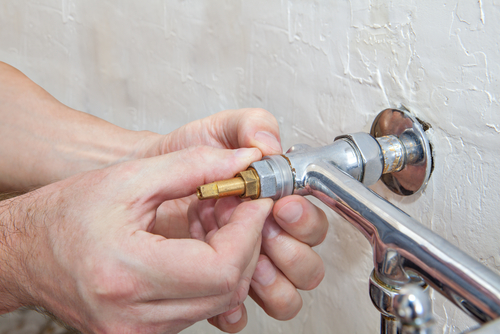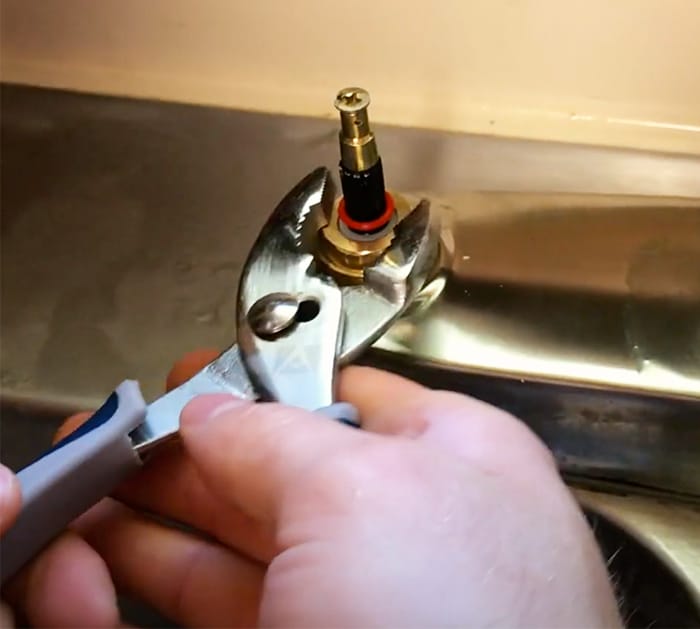My Benefits of Correcting a Faulty Faucet
My Benefits of Correcting a Faulty Faucet
Blog Article
This article below pertaining to What Causes Leaky Faucets & How To Fix Them is fairly attention-grabbing. You should check it out.

Leaking taps might feel like a minor hassle, however their effect surpasses just the inconvenience of the noise. From wasting water to sustaining unneeded financial costs and health threats, disregarding a trickling faucet can lead to various consequences. In this article, we'll explore why it's essential to resolve this typical home problem immediately and successfully.
Waste of Water
Ecological Impact
Trickling taps add dramatically to water waste. According to the Epa (EPA), a single faucet trickling at one drip per second can squander greater than 3,000 gallons of water each year. This not just stress water resources but also influences ecosystems and wildlife dependent on them.
Step-by-Step Guide to Fixing a Dripping Tap
Tools Called for
Before trying to repair a trickling tap, collect the needed tools, consisting of an adjustable wrench, screwdrivers, substitute parts (such as washers or cartridges), and plumber's tape.
Usual Tap Issues and Their Solutions
Identify the sort of faucet and the specific concern triggering the drip. Common troubles include damaged washers, rusty valve seats, or faulty O-rings. Describe maker instructions or online tutorials for detailed assistance on fixings.
Financial Prices
Enhanced Water Costs
Beyond the ecological influence, dripping faucets can blow up water costs considerably. The accumulated waste with time translates into greater energy costs, which might have been avoided with prompt repair work.
Potential Building Damage
Additionally, prolonged dripping can cause damage to fixtures and surface areas surrounding the tap. Water build-up can create staining, rust, and also structural problems if left neglected, resulting in added fixing expenses.
Health and wellness Issues
Mold and Mildew Growth
The continuous visibility of dampness from a trickling tap creates an optimal atmosphere for mold and mildew and mold development. These fungis not just endanger interior air top quality but additionally posture wellness threats, especially for individuals with respiratory system problems or allergies.
Waterborne Conditions
Stagnant water in trickling faucets can come to be a breeding ground for germs and various other pathogens, enhancing the threat of waterborne conditions. Pollutants such as Legionella microorganisms grow in stationary water, potentially resulting in major illnesses when consumed or inhaled.
Do it yourself vs. Professional Repair
Benefits and drawbacks of DIY Repair
While some might try to repair a leaking faucet themselves, DIY repairs feature their own set of obstacles. Without correct knowledge and tools, do it yourself efforts can exacerbate the issue or bring about incomplete repairs, lengthening the issue.
Advantages of Hiring an Expert Plumber
Employing a professional plumber makes certain that the underlying source of the leaking tap is resolved effectively. Plumbing professionals have the competence and equipment to detect and fix tap concerns successfully, conserving time and lessening the danger of further damages.
Environmental Duty
Specific Contribution to Preservation
Taking duty for dealing with dripping faucets straightens with more comprehensive efforts towards water preservation and environmental sustainability. Every person's actions collectively make a substantial impact on maintaining valuable sources.
Lasting Living Practices
By prioritizing timely fixings and embracing water-saving behaviors, people contribute to lasting living practices that profit both present and future generations.
Safety nets
Regular Upkeep Tips
To stop dripping faucets, carry out regular maintenance such as cleaning up aerators, inspecting for leakages, and changing worn-out components quickly. Additionally, take into consideration installing water-saving tools or upgrading to a lot more efficient components.
Importance of Prompt Fixes
Attending to trickling faucets as quickly as they're seen avoids additional water wastefulness and possible damage, eventually saving both water and cash in the future.
Influence On Residential Property Worth
Perception of Well-Maintained Residential Or Commercial Property
Maintaining a residential property in good condition, including dealing with maintenance concerns like leaking faucets, boosts its regarded value and worth amongst prospective purchasers or lessees.
Influence on Resale Value
Residences with well-kept plumbing components, consisting of faucets, command greater resale worths in the real estate market. Dealing with dripping taps can add to a positive impression throughout home examinations and negotiations.
Conclusion
Addressing a leaking tap exceeds plain convenience; it's a necessary action toward conserving water, decreasing monetary costs, and securing wellness and property. Whether through DIY repair work or expert support, taking action to repair dripping faucets is a tiny yet impactful means to advertise accountable stewardship of resources and add to a healthier, much more lasting future.
How to Fix a Leaky Faucet: Step-by-Step Repair Guide
A leaky faucet may seem like a simple annoyance, but if it's not fixed promptly, that leak could cost hundreds to potentially thousands. From water damage to mold, mildew, and high water bills, even a tiny leak can be catastrophic if left unattended. Damage like this can even affect the overall value of your home, so it's important to take the right approach for leaky faucet repair. You may need the help of a plumber in some cases, but we've got a few tips you can try on how to fix a leaky faucet before calling the pros.
Four Faucet Types
When you're learning how to fix a leaky faucet, the first step is knowing what kind of faucet you're working with! There are four common types.
Cartridge Faucets
Cartridge faucets come in one- or two-handled varieties. In one-handled cartridge faucets, hot and cold water combines in a single cartridge. In the two-handled versions, hot and cold water are controlled separately and mixed in the faucet.
Ball Faucets
Ball faucets have a single lever you push up and down to adjust the pressure and rotate to change the temperature. A slotted metal ball controls the amount of water allowed into the spout.
Compression Washer Faucets
They're the oldest type of faucet, but they're still used in many homes — especially older ones. Compression faucets have two separate handles that, when turned, raise or lower the washer that seals a water valve. This valve stops water from flowing through the faucet when it is turned off.
Disc Faucets
Disc faucets rarely need to be repaired due to their maintenance-free design. The water flow is controlled by two discs — the upper one raises and lowers against a fixed lower disc, creating a watertight seal. If your disc faucet starts leaking, you may need to replace the seals or clean residue buildup from the inlets.
Fixing a Leaky Faucet
Step 1: Turn Off the Water
Whether you're learning how to fix a leaky bathtub faucet or how to fix a leaky kitchen faucet, always turn off the water supply to your working area when you're fixing a leak. The last thing you want is a flood added to your list of things to fix.
Look for the shutoff valves below your sink or around the tub and turn them clockwise to stop the water flow. If your faucet doesn't have shutoff valves, you may need to turn off the water for the whole house. Check to make sure it's off by turning the faucet on. If nothing comes out, you're ready to start the repair.
Step 2: Take Apart the Faucet
How you disassemble your faucet depends on the type of fixture you have. You can use a flathead screwdriver to remove the caps on top of the handle or handles for cartridge and compression faucets. Inside, you should see handle screws. Unscrew these with a screwdriver to remove the handle.
Disc- and ball-style faucets will typically have an inlet screw near the handle, and removing that will reveal the interior of the faucet.
Detach the Valve Stem
For cartridge- and compression-style faucets, you'll see the inner valve stem or cartridge once you remove the faucet handles. If you have a compression faucet, unscrew the brass valve stem. If you have a cartridge faucet, pull out the cartridge. If your cartridge has been in place for a while, it may require some tools or extra force to remove it due to mineral deposits.
Examine and Replace Parts
Once you've removed the parts, check them out to confirm what needs to be replaced. You may see corroded rubber washers, O-rings, stems, or cartridges. On a ball-style faucet, check the seats and springs for damage.
If you need to repair a leaky disc faucet, check the inlet and seals on the lower disc.
Once you determine what parts must be replaced, visit your local hardware store. Bring the damaged parts with you to ensure you can purchase the correct components to replace them.
Clean Valves and Faucet Cavity
If you've removed a stem or cartridge, you may notice mineral buildup in the faucet's threads. Use white vinegar to clean the valve seat by soaking it for a few minutes, then scrub it away with a soft toothbrush and rinse with warm water. You can also clean the interior of the faucet in the same way.
Reassemble the Faucet
Once your faucet is cleaned and the required parts have been replaced, it's time to reassemble it. Put the pieces back together and slowly turn the water supply back on. Doing this slowly is crucial because too much initial water pressure can damage the new hardware you've just installed.
https://homewarranty.firstam.com/blog/how-to-fix-leaky-faucet

Do you really like reading up on How to Fix a Dripping or Leaky Faucet ? Try to leave feedback down below. We will be glad to know your opinions about this review. Hoping that you come back again in the near future. Sharing is caring. Helping others is fun. I recognize the value of your readership.
Report this page